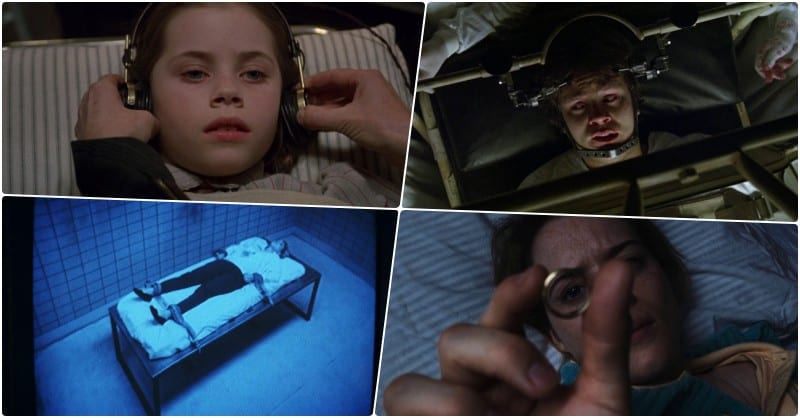#The Complicated History of Horror Movies and Insane Asylums

Table of Contents
“The Complicated History of Horror Movies and Insane Asylums”
<span class="mx-1">A crutch, a mainstay, an effective setting in the right hands: let’s talk about horror movie insane asylums. </span>
</p><div id="">
<figure class="sf-entry-featured-media ">
<img width="800" height="418" src="https://filmschoolrejects.com/wp-content/uploads/2022/07/horror-insane-asylums.jpg" class="articlethumb wp-post-image" alt="Horror Insane Asylums" srcset="https://filmschoolrejects.com/wp-content/uploads/2022/07/horror-insane-asylums.jpg 800w, https://filmschoolrejects.com/wp-content/uploads/2022/07/horror-insane-asylums-768x401.jpg 768w" sizes="(max-width: 800px) 100vw, 800px"/> </figure>
<!-- START BYLINE -->
<div class="row align-items-center justify-content-center my-4 text-center medium dark-gray">
By Meg Shields · Published on July 29th, 2022
</div>
<!-- END BYLINE -->
<p><em>Welcome to The Queue — your daily distraction of curated video content sourced from across the web. Today, we’re watching a video essay that looks at the history of insane asylums in horror movies.</em>
As the video essay below is quick to point out, madness has always been a cornerstone of horror fiction. We’re talking inconceivable monsters that turn inquiring minds to mush, that sort of thing. The fear of not being able to trust your own perception of the world is valid and relatable. And it makes sense that a fear of madness would hold an especially visceral grip on our psyches in the context of how we have historically treated the mentally ill.
Whatever you want to call them — insane asylums, sanatoriums, psychiatric hospitals — mental health facilities have, until very recently, been extremely traumatizing places for their residents. (Not to say that things are perfect today). From invasive care to squalid physical conditions, historically speaking, mental health facilities have rightfully garnered a reputation for being places worthy of fear.
But when you break down what is being coded as terrifying about mental health facilities, the answer is rarely “the historical dehumanization of the mentally ill and the underfunding of social support services.” Instead, for decades, the complicated public perception of state institutions has largely turned on-screen mental hospitals into haunted houses and human zoos. On-screen psychiatric facilities have their own visual Rolodex that we’ve come to expect as an audience: infantilizing day rooms, squalid conditions, and hey, maybe a rusty wheelchair or two. It’s often the patients themselves who are “scary,” which, if you’re at all familiar with the history of institutional care, is upsetting if roundly predictable.
The video essay below addresses the messy history of how insane asylums have been depicted on screen. It also attempts to show how some of those depictions have affected genuine actionable change towards the treatment of mentally ill folks. It’s a long watch but a worthwhile one.
Given the title, I assume you know what you’re signing up for. But be warned that the essay contains content and visuals that some might find disturbing.
Watch “The History of Insane Asylums and Horror Movies”:
Who made this?
This video essay on how horror movies depict insane asylums comes to us from In Praise of Shadows, a video essay channel is run by Zane Whitener and based in Asheville, North Carolina. The channel focuses on horror, history, and retrospectives. Under their “Anatomy of a Franchise” banner, they break down horror properties including Tremors, The Stepfather, and Re-Animator, in addition to The Hills Have Eyes. You can check out the series’ playlist here. And you can subscribe to the In Praise of Shadows YouTube channel here. And you can follow them on Twitter here.
More videos like this
Related Topics: Horror, The Queue
<!-- AUTHOR BOX -->

<!-- START RECOMMENDED READING 1 -->
<section class="recommended py-5">
<h3>Recommended Reading</h3>
</section>
<!-- END RECOMMENDED READING -->
</div><script async src="//platform.twitter.com/widgets.js" charset="utf-8"></script>
If you liked the article, do not forget to share it with your friends. Follow us on Google News too, click on the star and choose us from your favorites.
For forums sites go to Forum.BuradaBiliyorum.Com
If you want to read more Like this articles, you can visit our Social Media category.


